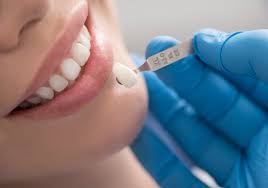
Dental Crowns and Bridges
Unlike devices which can be removed such as dentures, both bridges and crowns are prosthetic devices are fixed prosthetic devices.
When you have dentures, you have the luxury of taking it out and clean it every day, but bridges and crowns are affixed onto the implants or tooth and can be removed only by a registered dentist.
How they work:
Crowns and Bridges
A damaged tooth can be covered or capped entirely with the help of crowns. Apart from fortifying a tooth that is damaged, crowns can also be used to improve tooth alignment, appearance, and shape. Also, crowns can be placed on top of an existing implant which provides tooth-like structure and shapes for function. Ceramic or porcelain crowns can be matched to the tooth’s natural color. There are a number of different materials in use including metal and gold alloys as well as ceramic and acrylic materials.
Generally stronger than porcelain, alloy may be recommended for back teeth while porcelain that is bonded to a metal shell is used more often as it is attractive as it is strong.
You may be recommended by your dentist of the following:
- When there isn’t enough tooth remaining a large filling may be placed
- Protect weak teeth from being fractured
- Fractured tooth restoration
- Bridge could be attached
- Cover a tooth that has had root canal treatment
- Cover a discolored or poorly shaped tooth
- Cover a dental implant
How do Bridges Work?
A bridge may be recommended if you’re missing one or more teeth. Gaps left by missing teeth eventually cause the remaining teeth to rotate or shift into the empty spaces, resulting in a bad bite. The imbalance caused by missing teeth can also lead to gum disease and temporomandibular joint (TMJ) disorders.
Crowns and Bridges are commonly used to replace one or more missing teeth. They span the space where the teeth are missing. Bridges are cemented to the natural teeth or implants surrounding the empty space. These teeth, called abutments, serve as anchors for the bridge. A replacement tooth, called a pontic, is attached to the crowns that cover the abutments. As with crowns, you have a choice of materials for bridges. Your dentist can help you decide which to use, based on the location of the missing tooth (or teeth), its function, aesthetic considerations, and cost. Porcelain or ceramic bridges can be matched to the color of your natural teeth.
How are Crowns and Bridges Made?
Before either a crown or a bridge can be made, the tooth (or teeth) must be reduced in size so that the crown or bridge will fit over it properly. After reducing the tooth/teeth, your dentist will take an impression to provide an exact mold for the crown or bridge. If porcelain is to be used, your dentist will determine the correct shade for the crown or bridge to match the color of your existing teeth.
Using this impression, a dental lab then makes your Crowns and Bridges, in the material your dentist specifies. A temporary crown or bridge will be put in place to cover the prepared tooth while the permanent crown or bridge is being made. When the permanent crown or bridge is ready, the temporary crown or bridge is removed, and the new crown or bridge is cemented over your prepared tooth or teeth.
How Long do Crowns and Bridges Last?
While crowns and bridges can last a lifetime, they do sometimes come loose or fall out. The most important step you can take to ensure the longevity of your crown or bridge is to practice good oral hygiene. A bridge can lose its support if the teeth or bone holding it in place are damaged by dental disease. Keep your gums and teeth healthy by Brushing with fluoride toothpaste twice a day and flossing daily. Also see your dentist and hygienist regularly for checkups and professional cleanings.
To prevent damage to your new crown or bridge, avoid chewing hard foods, ice or other hard objects.
Dental Crowns and Bridges
Crowns and Bridges Used for aesthetic and functional purposes, dental crowns are thin yet durable covers that are placed over cracked, uneven, chipped or damaged teeth.
Crowns and Bridges can significantly decrease oral discomfort and provide support to the damaged teeth. It is a necessity when a tooth is in danger of breaking altogether.
In some instances, a tooth would have to be built up with a core material to make sure it has a solid foundation. In which the doctor will prep the tooth in almost a 360 degree fashion to make room for the crown.
At Luminous Smile Dental we offer dental crowns to patients who seek to dramatically increase the appearance and functionality of their teeth.
Bridges are natural-looking dental appliances that can replace a section of missing teeth. Because they are custom-made, bridges are barely noticeable and can restore the natural contour of teeth as well as the proper bite relationship between upper and lower teeth.
Bridges are sometimes referred to as fixed partial dentures, because they are semi-permanent and are bonded to existing teeth or implants. Some bridges are removable and can be cleaned by the wearer; others need to be removed by a dentist.
Porcelain, gold alloys or combinations of materials are usually used to make bridge appliances.Appliances called implant bridges are attached to an area below the gum tissue, or the bone.
The way to clean your bridge is to use a floss threader.